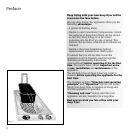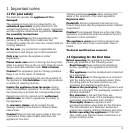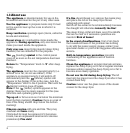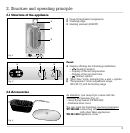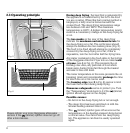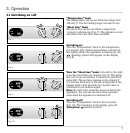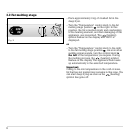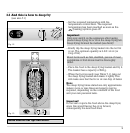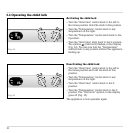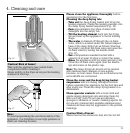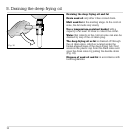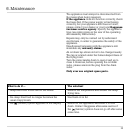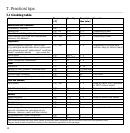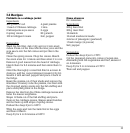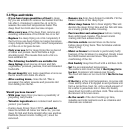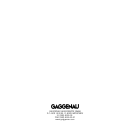
16
7.3 Tips and tricks
– If you have large quantities of food to deep
fry, you are advised to remove the basket from the
tub after 1-2 minutes to allow the oil or fat to
assume the selected temperature faster. The
deep fried food will also become crisper.
– After every use of the deep fryer, remove any
resulting remainders of food from the oil or fat.
– Replace the deep frying oil or fat completely if
the food you are deep frying no longer becomes
crispy despite having set the correct temperature
or if the oil or fat goes brown.
– Only ever use fat for deep frying that is devoid
of water and protein. Such fats have a high
smoking point. This means that such a fat is a
heat-resistant fat.
– The following foodstuffs are suitable for
deep frying: small pieces of meat and fish,
vegetables, potatoes, pastries, fruit and breaded
foodstuffs.
– Do not deep fry very large quantities at once as
the fat would cool down too much.
– After cooling down, close the lid. This is
necessary for safety reasons and prevents dirt
from falling into the fat.
Would you have known?
– With your deep fryer you have a possibility of
preparing tasty meals.
– Valuable ingredients are retained and serve to
protect your health.
– During deep frying (from 170°C), oil and fat
takes on neither an odour nor taste. So, you can
deep fry fish and fruits straight after one another.
Residues (bread crumb coating etc.) must be
removed.
– Remove ice from deep frozen foodstuffs. Fill the
basket outside of the deep fryer.
– Allow deep frozen fish to thaw slightly. This will
shorten the deep frying time and the fish will take
on a lovely golden yellow colouring.
– Peel zucchini and aubergines before coating
them with bread crumbs. The bread crumb
coating will then adhere better.
– Cut into cutlets several times on the bone
before deep frying them. This facilitates uniform
deep frying.
– Moist or frozen food leads to particularly hefty
foaming of the fat when it is inserted. Slowly lower
the filled basket several times. This prevents
overflowing of the fat.
– Dab freshly deep fried food with a kitchen cloth.
– Set the recommended temperature.
The surface will crust too fast if the frying fat is
too hot. Its interior will remain raw, though.
The food will take on too much fat if the fat is too
cold.
– If the fat is at the right temperature, its pores will
close swiftly when it is dipped in and proteins will
form a protective crust. So, only a small amount of
fat is able to penetrate into it. Also dry freshly
deep fried food with a kitchen cloth. This reduces
the amount of fat even more.
– As the result of the short heating up time,
valuable and vital nutrients such as vitamins and
minerals are retained.



